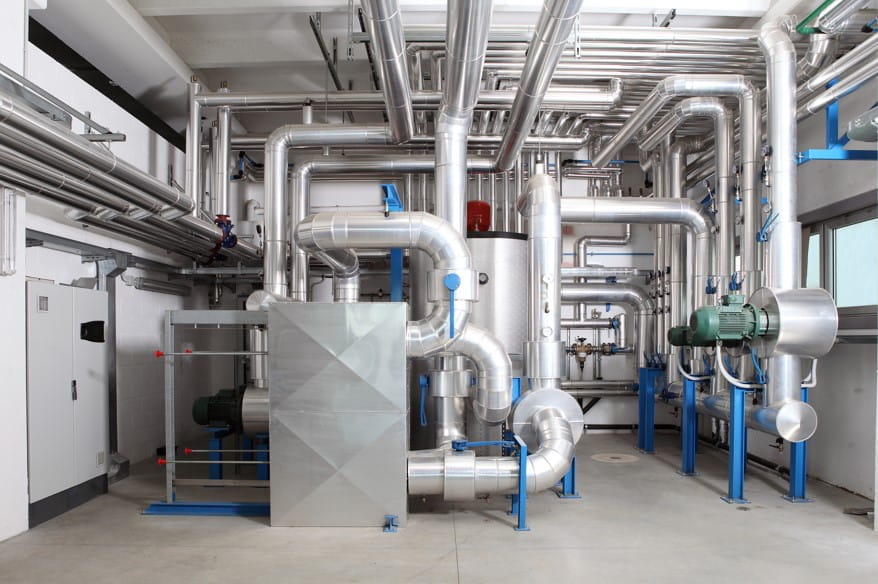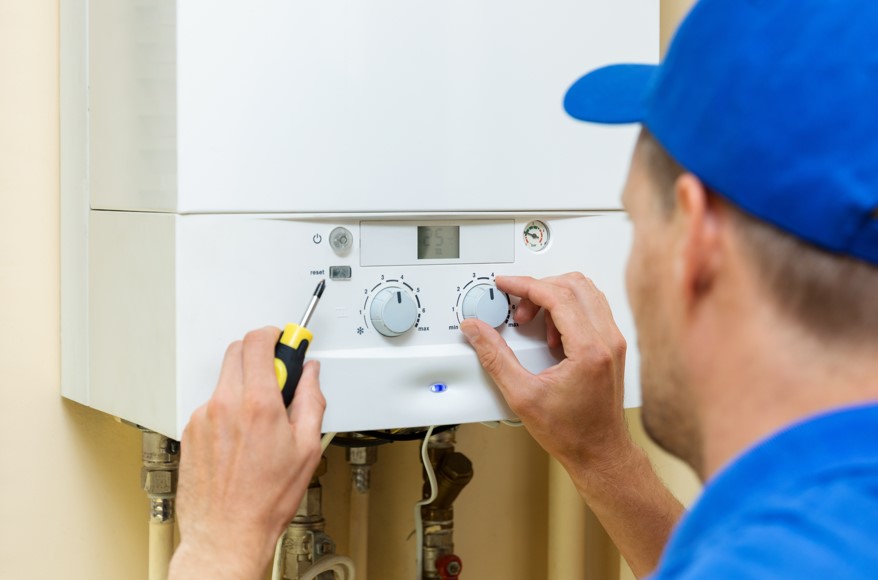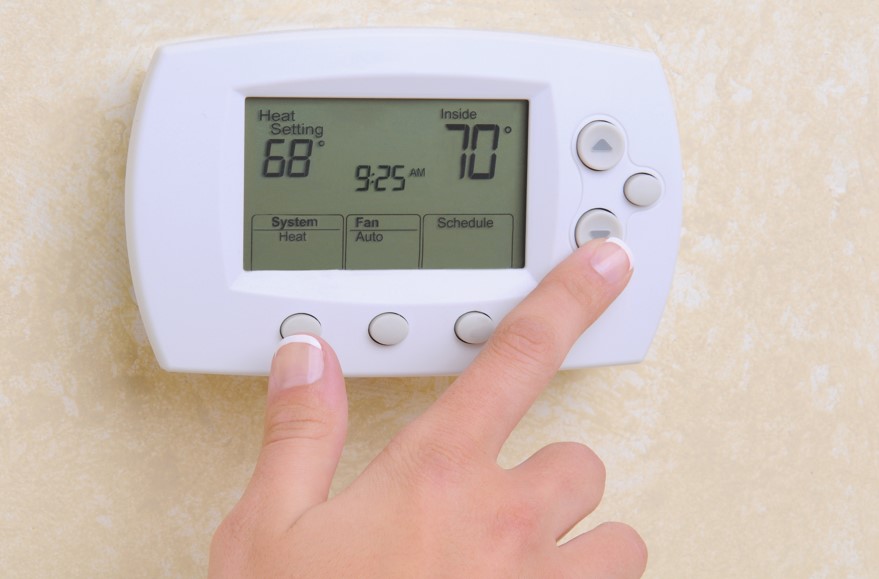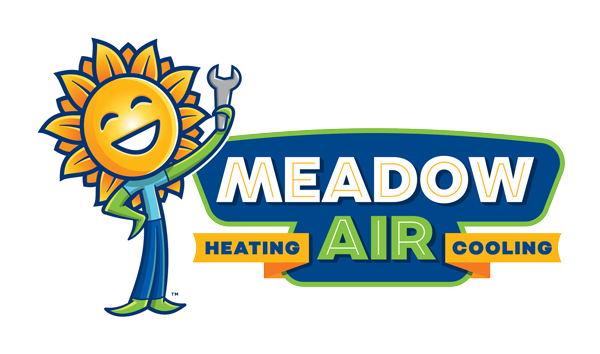HVAC Terms You Should Know
Learning what HVAC terms and definitions mean can be very helpful in talking over the issues with your heating, ventilation, and air conditioning system and make your purchasing choices more aware.
Apart from that, you will acquire some basic mechanical engineering knowledge that can also apply to the heating and cooling systems in your vehicle, fridge, and more. Knowing such principles, you can even perform simple maintenance tasks yourself and save time and money.

Our extensive glossary will certainly be a great help in understanding both residential and commercial HVAC terminology, including many acronyms that may look very mysterious at first glance.
The Most Important HVAC Terms to Know
Absorption refrigeration: A type of refrigeration system that uses a heat source instead of mechanical energy to drive the absorption of refrigerant into a solution, creating a cooling effect. As a result of a chemical process, it can transform low-temperature and low-pressure vapor into high-pressure vapor.
AC: Air conditioning – A process aimed at reaching and keeping a desired temperature, relative humidity, and air purity conditions inside a building. It is applied to improve the personal comfort of the people staying indoors.
ACH: Air changes per hour – A measure of ventilation efficiency, indicating the number of times that a volume of air in a space is replaced per hour. It can also sometimes be called an “air exchange rate” or an “air change rate.”
Air balance: The process of adjusting the airflow rates and temperatures in HVAC systems to achieve optimal comfort and efficiency. Air balancing includes dialing in every duct or vent in order to reach the same temperature simultaneously in the whole building.
Air filter: A device that removes contaminants, allergens, and other particulate matter from the air before it is circulated by an HVAC system. It is an aftermarket product that can usually last for 1-6 months in the case of a disposable model and up to 5 years when it comes to a washable one.
Air handler: The indoor unit of an HVAC system that is responsible for circulating air across the heating or cooling coils. As the name suggests, it handles the air and delivers warm or cold air throughout the building.
Airflow: The measure of air volume moving through a duct, measured in cubic feet per minute (CFM).
Airside economizer: A component or system that uses outdoor air to cool indoor air in HVAC systems, increasing energy efficiency and reducing operating costs. Such a duct and damper arrangement with a control system can be used only when the outdoor conditions are favorable to reach the desired temperature.
Backdraft dampers (gravity dampers): A mechanical device that prevents the backflow of exhaust gases from HVAC equipment by opening or closing as needed. It helps in both the intake and exhaust of the heating, ventilation, and air conditioning systems.
Balancing damper: A component used to regulate the flow of air inside an HVAC ductwork system for optimal ventilation. It prevents air pressure imbalances that can cause minor annoyances for occupants, like random gusts of air and slamming doors, as well as contribute to more serious problems in the whole system.
Boiler: A device used to produce steam for space heating or hot water supply in residential and commercial buildings. Steam is distributed to steam radiators through pipes, and hot water can be spread via baseboard radiators or radiant floor systems. It can also heat air with a coil.

BTU: British Thermal Unit – A standard unit of measurement used in heating and cooling systems to denote the amount of heat required to raise the temperature of one pound of water by one degree Fahrenheit. It has been declined or replaced in many countries around the world, but it is still unofficially used in the USA and other English-speaking countries.
Bypass damper: A device installed in HVAC systems to regulate the amount of air that bypasses heating or cooling coils. Depending on the situation, it can either prevent or allow air to enter the bypass duct.
Carbon dioxide (CO2) sensor: A device used to monitor indoor air quality by measuring the concentration of CO2. It is vital to detect the presence of carbon dioxide in the air as soon as possible, as exposure to it can result in various health problems, including dizziness, headaches, difficulty breathing, sweating, tiredness, increased heart rate, elevated blood pressure, or even coma or convulsions.
Chiller: A refrigeration system that circulates chilled water through cooling coils to maintain a comfortable indoor temperature.
Coil: A component used in HVAC systems for heat transfer, either for heating or cooling the air. It usually is either attached to the furnace or placed inside the air handler.
Combustion air: Air required for the complete and efficient burning of fuels such as liquid propane (LP) or natural gas in furnaces, boilers, and other combustion systems.
Compressor: A mechanical device that compresses a refrigerant to move it around an HVAC system.
Condensate drain: A component used to remove condensate water from HVAC equipment and prevent moisture buildup leading to damage.
Condenser: The outdoor unit of an HVAC system responsible for releasing heat absorbed during the cooling process. It can also be used for heating the building, bringing the natural warmth from outside to your home or office. The device sits outside the building and is connected to the indoors with tubing.
Condensing furnace: A type of high-efficiency furnace that extracts heat from exhaust gases to maximize efficiency and reduce energy consumption.
Control valve: A device installed in HVAC systems to regulate the flow of fluid or gas to maintain optimal temperature and pressure.
Damper: A component installed in HVAC systems to control airflow rates and adjust ventilation settings. You can compare it to a dam because when it is closed, it prevents the air from going through it.
Dehumidifier: A device designed to remove excess moisture from the air, either by refrigeration or adsorption. It is usually used for health and thermal comfort reasons, or to get rid of musty odor and prevent mildew from developing.
Direct expansion (DX) coil: A type of evaporator coil that uses refrigerant directly to cool and/or eliminate moisture from HVAC systems. A liquid-vapor refrigerant mixture reaches the coil and cools the air while evaporating, finally leaving the coil as gas.
Duct insulation: Material used to insulate HVAC ducts to prevent heat loss or gain and improve energy efficiency. You can use duct wrap insulations in circumstances where acoustical performance is not important.
Duct leak testing: The process of testing HVAC ductwork for leaks and identifying the areas where air escapes. To perform it, the whole ventilation system needs to be sealed off and then pressurized to check how airtight it is. When a technician determines how much air pressure is lost from the ductwork, they trace down the locations to seal or fix them.
Ductwork: The network of pipes and channels used to distribute warm or cold air throughout a building. Air ducts are connected to the HVAC unit, responsible for filtering and cooling or heating the air before it is released.
Efficiency: A measure of the effectiveness of an HVAC system in converting energy into heating or cooling output. The higher the efficiency rating, the less electrical energy will be used to cool the building fast.
ERV: Energy recovery ventilator – A kind of mechanical equipment with a heat exchanger combined with a ventilation system to recover and reuse energy transferred by exhaust air in HVAC systems.
Evaporator: The component responsible for absorbing heat from the indoor air during the cooling process. It is placed inside the air handler or attached to the furnace.
FCU: Fan coil unit – A device cooling or heating the indoors using a fan and a coil, without the need to connect it to ductwork.
Filtration: The process of removing harmful substances, pollutants, or particles from the air using a filter. It helps to eliminate pollen, pet dander, dust, and other small pollutants from the air you and your family or employees breathe. As the particles are trapped in the filter, they can’t be recirculated throughout the interior.
Fresh air intake: The process of transferring fresh outdoor air into a building using an HVAC system to provide ventilation and improve indoor air quality so that your interiors are free from toxic or contaminated air.
Gas furnace: An HVAC system that heats air by burning natural gas, propane, or other flammable gases.
Heat exchanger: A device used to transfer heat from one medium to another, such as air-to-air or air-to-water. They are not only helpful in heating and cooling homes and other buildings but also make it possible for machines and engines to work more effectively.
Heat pump: An HVAC system that transfers heat from one space to another using electricity, either for heating or cooling purposes. It is an energy-efficient alternative to air conditioners or furnaces in any climate.
Heating load: The amount of heating needed in a room to maintain a comfortable indoor temperature.
HEPA filter: High-efficiency particulate air filter – A type of air filter that traps microscopic particles and pollutants to improve indoor air quality. It is supposed to remove at least 99.97% of mold, bacteria, pollen, dust, and any airborne particles of a size of 0.3 microns (µm).
Humidifier: A device designed to add moisture to the air, either through evaporation or misting. It is particularly useful during winter when you use your heater, which causes the relative humidity of the air in the building to reduce.
Humidity control: The process of regulating indoor humidity to achieve optimal comfort and prevent mold growth. A humidity control system can lower or increase the level of water vapor in the indoor air to maintain the desired humidity ranges.
HVAC controls: The devices and systems used to regulate temperature, ventilation, and humidity in HVAC systems. Such a computerized mechanism can be used to, for example, turn an air conditioner or furnace on or off or just adjust particular settings.
Hydronic heating: A heating system that uses hot water or steam to transfer heat through radiators or heat exchangers through sealed pipes. It can also be applied to heat floor slabs, towel rails, or even swimming pools. Such a heating system heats water at its source with an energy-efficient gas boiler.
IAQ: Indoor air quality – A measure of the quality of indoor air based on a variety of factors, including pollutants, allergens, humidity, and temperature. Keeping excellent indoor quality is one of the essential purposes of using an HVAC system to ensure proper filtration and ventilation.
Infrared heaters: A type of heating system that emits infrared radiation to warm objects or people in a space. It creates heat in a similar way to the sun. We can’t see infrared light, but it is absorbed by our skin, clothes, and other objects, and this is how things around an infrared heater warm up.
Insulation: Material used to prevent heat loss or gain, which is crucial for energy-efficient HVAC systems. It can also help you avoid condensation in cold ducts. The amount of insulation needed is usually determined mostly by the place where the duct is running within the building.
Joule: The basic unit of energy in the International System of Units (SI), equalling to work performed by a force of one newton when its point application is moving one meter in the direction of action of the force, equivalent to one 3600th of a watt-hour.
Kilowatt-hour (kWh): A non-SI unit of energy equivalent to one kilowatt of power exerted for one hour and to 3.6 megajoules (MJ) in SI units.
Load calculation: The process of determining the required heating or cooling capacity of an HVAC system in BTUs per hour based on the size and layout of a building.
Louver: A ventilation device installed in HVAC systems to control the flow of air to regulate temperature and humidity, as well as keep out unwanted elements, including dirt, debris, and water. A number of operable or fixed blades assembled in a frame can provide this functionality.
Makeup air unit: An HVAC system that supplies fresh outdoor air to replace the air that is exhausted from a building. If a home or another building is ventilated and not replenished from a different air source, it can lead to depressurization.
Mechanical ventilation: The process of exchanging stale indoor air with fresh outdoor air through natural or mechanical means.
Multi-zone HVAC system: An HVAC system that allows for independent control of temperature and ventilation settings in different areas or zones of a building.
NATE – North American Technician Excellence, a nonprofit organization certifying HVAC technicians through a series of tests requiring both specialized knowledge and experience. To make sure the technician is still good at their job and up to date in the industry, they organize follow-up training and test them every two years.
NZEB: Net-zero energy building – A building designed to produce as much energy as it consumes, using renewable energy sources and energy-efficient technologies.
Outdoor unit: The component of an HVAC system located outdoors and responsible for releasing heat absorbed during the cooling process. It typically includes a propeller fan, a compressor, a heat exchange coil, and a circuit board. It is sometimes referred to as the “heat exchanger” or the “condenser.”
Packaged unit: An HVAC system that contains all components, including the heating or cooling unit, compressor, and evaporator, in a single cabinet. It is a great solution for buildings that don’t have a lot of space inside for either an air handler or a furnace and a coil. Package units with all the necessary components usually sit outside, either on the side of the building or on its roof.
Programmable thermostat: A device used to adjust the temperature of an HVAC system automatically or on a predetermined schedule. You can set a different temperature to a specific time, adjusting the thermostat to the temperature fluctuations between day and night.

Refrigerant: A substance used in HVAC systems as a heat transfer agent, such as Freon or R-410a. Such a chemical can produce a cooling effect while vaporizing or expanding.
Refrigeration cycle: The process by which refrigerant absorbs heat from one space and releases it in another to provide cooling. Such a cycle starts and ends with a compressor – the refrigerant flows into it and undergoes compression and pressurization. The refrigerant turned into a hot gas is pushed to the condenser, transforming the vapor into liquid and absorbing some heat.
RTU: Rooftop unit – An HVAC system installed on the roof of a building that contains all components, including the heating or cooling unit, compressor, and evaporator, in a single cabinet. It can provide both heat and air conditioning for certain types of interiors.
SEER: Seasonal Energy Efficiency Ratio/Rating – A rating system used to measure the energy efficiency of air conditioners and heat pumps. To count it, the cooling output of an air conditioner and heat pump in a cooling season needs to be divided by the energy it uses in Watt-Hours.
Split system: An HVAC system that separates the heating or cooling component from the compressor and evaporator, providing increased flexibility and efficiency. The indoor and outdoor units of a split HVAC system are connected with copper tubing.
Thermal mass: The ability of a building or material to absorb and store heat energy, which can help regulate indoor temperature and improve energy efficiency. It can be effectively used as an element of the whole building’s HVAC strategy, helping to reduce the energy needed for cooling and, in some cases, removing the requirement to provide air conditioning at all.
Thermostat: A device used to control the temperature of an HVAC system. It monitors the temperature inside the building and automatically sets the heating or cooling system in such a way that it can keep the desired level, optimizing the home’s comfort and energy efficiency.
Unit ventilator: A self-contained HVAC unit that provides heating or cooling to a single room or space. They can operate from a wall thermostat with a manual outdoor air control dial, or they can be equipped with cooling coils, ECM fan motors, and advanced automatic indoor air quality controls and sensors.
VAV: Variable air volume – An HVAC system that regulates airflow by varying the volume of air rather than the temperature, improving energy efficiency and comfort. VAV systems can have three modes of operation – reheating mode when the room requires heat, a dead-band mode where the setpoint is satisfied, and flow is at a minimum level in order to meet the ventilation requirements, and a cooling mode using variable flow rates designed to reach a temperature setpoint.
Ventilation rate: The amount of fresh outdoor air that should be introduced into a building to maintain indoor air quality and regulate temperature and humidity.
Ventilation shaft: A vertical duct used in HVAC systems to facilitate the movement of air to different levels of a building. They have a similar role to an exhaust fan in the wastewater system.

Watt: A unit of power defined as one joule per second. Typically, a central air conditioner unit can use around 3,000 watts per hour on a warmer day.
Zoning: The process of dividing a building into distinct cooling or heating zones, allowing for more precise temperature control and increased energy efficiency.
As you can see, there are many HVAC terms to know, ranging from basic principles to advanced technologies and applications. Whether you are a homeowner, facility manager, or another person responsible for caring for a building, understanding these terms is essential for ensuring optimal indoor comfort and energy efficiency while minimizing operating costs.
As much as we recommend knowing the basic HVAC duct terminology, we never expect you to be an expert. This is our job to help you with specialistic diagnosis, repairs, maintenance, installations, and replacements of heating, ventilation, and air conditioning systems. You can contact us anytime, and we will provide high-quality HVAC services as soon as possible!
